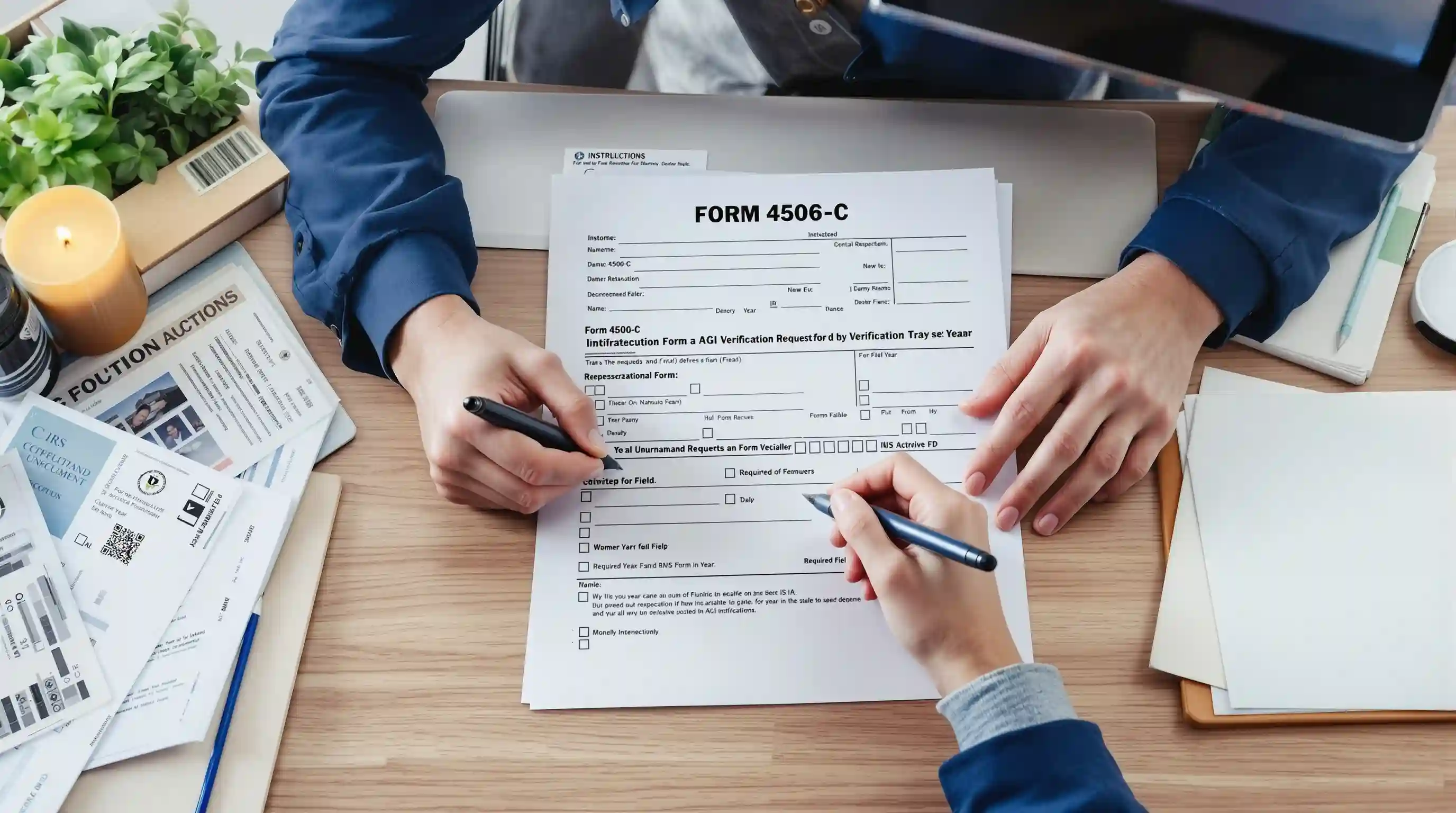What to Do If FAFSA Rejects Your IRS Transcript: A Step-by-Step Guide

The Free Application for Federal Student Aid (FAFSA) is the primary form used to determine eligibility for federal student aid, including grants, loans, and work-study opportunities. Completing the FAFSA requires accurate tax information so schools can calculate a student’s expected contribution and award financial assistance accordingly. Many applicants rely on an IRS transcript, which provides an official summary of their tax return data, to ensure that the details on their FAFSA form align with federal records. When this process works correctly, it simplifies verification and helps students receive aid without unnecessary delays.
The system may sometimes indicate on the FAFSA submission summary or through the financial aid office that the IRS transcript has been rejected. This outcome generally means that the information entered on the FAFSA form does not match IRS records or that the documentation could not be accepted for verification. Transcript rejections can occur for various reasons, such as name or Social Security number mismatches, address changes, or issues with the IRS Data Retrieval Tool. Regardless of the cause, a rejected transcript can prevent the completion of FAFSA verification, which delays access to critical federal student aid.
Understanding what to do if FAFSA rejects your IRS transcript is essential to maintaining eligibility for assistance. This article explains the most common reasons for transcript rejection, provides step-by-step instructions to resolve the issue, and offers guidance on giving additional documentation if necessary. It also addresses exceptional circumstances, such as amended tax returns or identity theft cases. By reviewing these steps carefully and working closely with your school’s financial aid office, students and families can resolve transcript rejections efficiently and ensure that access to educational funding is not disrupted.
Why FAFSA Might Reject Your IRS Transcript
FAFSA verification depends on accurate alignment between the information in your form and the data the IRS has on record. When these details do not match or technical barriers prevent confirmation, the result is a rejected transcript. Understanding the most common reasons for rejection helps applicants correct errors quickly and provide the necessary documentation to complete the process.
1. Data Mismatches
- Names and Social Security numbers
Minor differences, such as using a nickname instead of a legal name or transposing digits in a Social Security number, can cause the FAFSA system to reject your IRS transcript.
- Address inconsistencies
A mismatch between the address on your tax return and the address used on your FAFSA submission summary often leads to errors. For example, using a current address instead of the address shown on the tax return may prevent successful verification.
- Date of birth errors
The transcript cannot be accepted if the birth date on the FAFSA form does not match IRS records. Careful review of all entries is essential before submitting your application.
2. IRS Data Retrieval Tool (DRT) Issues
- System errors and downtime
The DRT occasionally experiences interruptions due to high usage, system maintenance, or technical problems. When this occurs, applicants may be unable to import tax information directly.
- Document limits
Students with more than 85 income documents attached to their IRS account cannot use the DRT successfully. This situation is more common for independent contractors and individuals with numerous income documents, such as 1099 forms.
- Identity verification failures
If your online account cannot be verified, the DRT will not complete the transfer of information, leading to a rejection notice. In such cases, alternative transcript request methods are necessary.
3. Filing Status Changes
- Marriage or divorce
If you filed your tax return as a single person but are now married or divorced, the IRS records may not match your current information.
- Household changes
Moving to a new address or reporting different parent information on your FAFSA can result in discrepancies. Consistency across tax forms and your FAFSA submission summary is critical to avoid transcript rejection.
4. Identity Theft or IRS Flags
- Tax-related identity theft
Standard transcript requests will be denied if the IRS has flagged your account due to suspected or confirmed identity theft. Victims in this situation must follow additional verification procedures before accessing records.
- Additional IRS requirements:
In flagged cases, the IRS may request that you submit forms or documentation directly. Instructions and guidance are available on the official IRS website. Financial aid offices typically require a signed copy of the tax return and a statement confirming that the IRS has addressed the identity theft.
Step-by-Step Guide: What to Do if Your FAFSA Rejects Your IRS Transcript
Resolving a rejected IRS transcript requires organized action. The following steps outline how to review your FAFSA form, confirm the accuracy of your tax information, and submit acceptable documentation to your financial aid office. Completing each step carefully will reduce delays and help you maintain eligibility for federal student aid.
Step 1: Contact Your Financial Aid Office
Your school’s financial aid office is the first point of contact when your FAFSA submission summary shows that your IRS transcript was rejected. Financial aid administrators can explain why the transcript was not accepted and provide clear instructions on what documents are required for verification.
- Ask specifically which documents were rejected or missing.
- Request written guidance so you can follow the correct process.
- Confirm the submission date by which you must provide replacement documentation.
Because aid disbursement is tied to verification status, failing to meet deadlines may cause significant delays. Always record your communication, including the name of the staff member who assisted you and the page or checklist provided for reference.
Step 2: Double-Check Your Information
Before submitting new paperwork, review your FAFSA entries alongside your tax return. Many rejections occur because small details do not match IRS records. Pay close attention to the following areas:
- Name and Social Security number
Ensure you entered your full legal name and correct SSN.
- Date of birth and address
Ensure that these details precisely match what is shown on your tax return.
- Parent information
If parent details are needed, ensure they are entered exactly as they appear on the parent’s tax documents.
- Tax year selection
Confirm that you have selected the correct year corresponding to the FAFSA cycle.
Correct your FAFSA form online and resubmit if you notice any errors. Note the changes in case your financial aid office asks for clarification. Correcting information before requesting another transcript reduces the risk of repeat rejections.
Step 3: Request the Correct IRS Transcript
Once you have verified that your FAFSA details are correct, the next step is to request the appropriate IRS transcript. The IRS provides several transcript types; using the wrong one can lead to further rejection. Always confirm with your financial aid office which transcript is required before requesting.
Available Transcript Types
- Tax Return Transcript
Shows most line items from your original tax return. This is the most commonly requested document for FAFSA verification.
- Tax Account Transcript
It provides basic information such as filing status, taxable income, and any adjustments made after filing.
- Record of Account Transcript
The system combines details from both the tax return and the account transcript.
Methods for Requesting Transcripts
- Online Request
Log in to the IRS website using your verified account. Once access is granted, you can immediately download and save the transcript. This is the fastest method when available.
- Phone Request
Call the IRS automated line at 800-908-9946. You will need your Social Security number, date of birth, and filing status. Transcripts requested this way are mailed within 5–10 calendar days.
- Mail Request Using Form 4506-T
Complete and submit Form 4506-T to the IRS. Include the correct address, tax year, and a valid signature. Processing typically takes up to 10 business days, and transcripts are mailed directly to you.
Important Notes
- Always select the transcript type your school requires explicitly.
- Double-check that your account details match IRS records before submitting the request.
- Keep copies of all forms, requests, and correspondence for your records.
- If you receive an error or cannot access your transcript online, switch to the phone or mail option rather than attempting repeated logins.
By requesting the correct transcript through the appropriate method, you reduce the risk of further delays and ensure your financial aid office receives the documents needed to complete the verification process.
Step 4: Provide Alternative Documentation
If you cannot obtain the required IRS transcript, your school will generally accept alternative forms of documentation to complete the FAFSA verification process. These substitutes allow financial aid administrators to confirm your tax information and move forward with awarding aid.
Accepted Alternatives
- Signed Tax Return Copy
Submit a complete copy of your filed tax return, including all schedules. At least one filer must provide an original signature for joint returns.
- W-2 and 1099 Forms
Provide copies of all income documents used to prepare your return. If a W-2 is unavailable, provide a signed statement detailing the reason and include any available proof of income.
- Verification of Non-Filing Letter
If you did not file a return for the required year, request this letter from the IRS as evidence. It confirms that no tax return was filed.
- Additional Documentation
Include 1098 forms or other supporting records if your financial aid office requests them.
Important Reminders
- Always check your school’s specific list of acceptable documents and submission instructions, as requirements vary.
- Be sure to date and sign any statements provided.
- Submit all pages of each form, not partial copies. Missing information often leads to additional delays.
Providing complete, legible, and properly signed documents ensures that your school can accept them in place of an IRS transcript. This step is critical if online, phone, or mail transcript requests are unsuccessful.
Step 5: Address Special Situations
Certain circumstances make it more challenging to match your FAFSA form with IRS records. If you fall into one of these categories, you must provide additional documentation and follow specific steps outlined by your financial aid office.
- Marriage or Divorce After Filing
If your marital status changed after submitting your tax return, your IRS transcript will not reflect your current information. Submit the transcript as filed and documents explaining the change, such as a marriage certificate or divorce decree.
- High-Income Filers with Multiple Forms
Taxpayers with many income sources, such as independent contractors with numerous 1099s, may exceed the IRS system’s document limits. In these cases, use Form 4506-T to request transcripts by mail and include all income forms when submitting to your school.
- Identity Theft Cases
Standard transcript requests will be rejected if your IRS records are flagged due to suspected or confirmed identity theft. Schools typically require a signed copy of your tax return plus an IRS letter confirming the situation, such as Letter 4883C or 4674C.
By addressing these exceptional cases directly and submitting the required paperwork, you ensure that your financial aid office has the information needed to complete the verification process.
Tips to Avoid Future Transcript Rejections
Preventing transcript issues begins with careful preparation and consistent recordkeeping. Ensuring that your tax information matches what you provide on your FAFSA form can reduce the chance of rejection notices and delays in receiving financial aid. The following practices will help students and families keep the process on track.
Keep the Information Consistent
- Always use the same legal name, Social Security number, and date of birth across your tax return and FAFSA. Even slight differences can cause mismatches in the IRS system.
- If your parents must provide income data, ensure their information is entered exactly as it appears on their tax documents.
Update Your Address Promptly
- File Form 8822 with the IRS when you change addresses to ensure that IRS records remain accurate.
- A common reason for transcript rejection is using a different address on your FAFSA submission summary than what is on file with the IRS.
File Taxes Early
- Submit your tax return well before the FAFSA filing period begins. This ensures that your IRS records are updated and ready for transcript requests.
- Electronic returns usually take two to four weeks to process, while paper returns may take six to eight weeks. Planning prevents timing conflicts.
Organize and Keep Copies of All Tax Forms
- Maintain a file with signed copies of your tax return, W-2s, 1099s, and supporting schedules. These can serve as additional documentation if transcripts are unavailable.
- Having all forms stored in one place allows you to respond quickly to requests from your financial aid office.
Use the IRS Data Retrieval Tool When Possible
- The IRS Data Retrieval Tool (DRT) reduces errors by transferring tax data directly into your FAFSA form. While it does not work in all situations, using it when available ensures that details match IRS records.
- If you cannot access the DRT, record the rejection and switch to phone or mail requests instead of repeated login attempts.
Review the FAFSA Submission Summary Carefully
- After submitting your application, review the FAFSA submission summary page to confirm that all tax details are displayed correctly.
- If any information seems incomplete or incorrect, make the necessary corrections promptly to minimize the risk of future rejections.
By following these practices, students and families can minimize errors, meet school deadlines, and protect access to federal student aid. Careful preparation and proactive updates to tax and FAFSA information are the most effective ways to avoid transcript verification problems.
Key Takeaways for Students and Families
Review Your Tax Return Carefully
Your tax return provides the foundation for FAFSA verification. Ensuring that names, Social Security numbers, and addresses match IRS records helps prevent rejections. Submitting complete copies with all schedules makes it easier for your financial aid office to confirm accuracy if transcripts are unavailable.
Keep Tax Information Consistent
Consistent tax information across all forms is critical. Differences between what you report on your FAFSA and what appears in IRS records often lead to delays. Always double-check every entry before submitting, and correct errors as soon as they are discovered.
Confirm Your FAFSA Submission Summary
The FAFSA submission summary is your opportunity to confirm that all reported details transferred correctly. Reviewing this page allows you to identify errors, missing data, or mismatches before they cause transcript rejection. Prompt corrections save time during verification.
Ensure Your FAFSA Form Matches the Documentation
Your FAFSA form must reflect the same information that appears on your IRS transcript or supporting documents. If changes occur after filing, such as an address update or amended return, provide explanations and additional documentation to your financial aid office.
By maintaining accurate records, monitoring your submission details, and acting quickly when problems arise, you can reduce the likelihood of transcript rejection and protect timely access to federal student aid.
Frequently Asked Questions (FAQs)
Why does FAFSA reject my IRS transcript?
FAFSA may reject your IRS transcript if details on your FAFSA form do not match IRS records. Even minor errors in names, addresses, or Social Security numbers can cause problems. Rejections also occur when tax returns are filed late or the IRS has not yet updated its records. Students often face these questions near deadlines, so resolving them quickly with your financial aid office is essential.
How do I request my IRS transcript for FAFSA?
You can request an IRS transcript in three ways. The fastest method is through the IRS online portal, where you can follow the secure link and download your transcript after verifying your identity. Alternatively, you can call 800-908-9946 to have one mailed within 5–10 days. You may also submit Form 4506-T by mail. Each method requires accuracy when entering your education and tax details.
What if I need to provide parent information on FAFSA?
Dependent students must provide parent information when completing the FAFSA. If a transcript cannot verify the parent’s tax return, the school will request signed copies of returns, W-2s, or other income records. Parents must also ensure that their data matches IRS records. Students should immediately contact their financial aid department for specific documentation requirements and correction steps when differences occur.
What happens if my FAFSA form is still rejected after corrections?
If your FAFSA form is rejected again after submitting corrections, your school may ask for additional documentation. This can include signed tax returns, verification letters, or proof of non-filing. Always follow the instructions provided by your school’s financial aid office. Deadlines are strict; some may fall in April or earlier, depending on the state. Submitting all documents on time ensures that aid eligibility is not interrupted.
Can I still receive aid if my transcript problem is unresolved?
Schools may often allow partial or temporary aid until verification is completed. However, final aid disbursement depends on resolving transcript issues. Students should communicate regularly with their school’s financial aid office, respond quickly to requests, and keep copies of all submissions. This process ensures compliance with federal and state regulations while protecting continued eligibility for financial assistance.














.avif)















































































